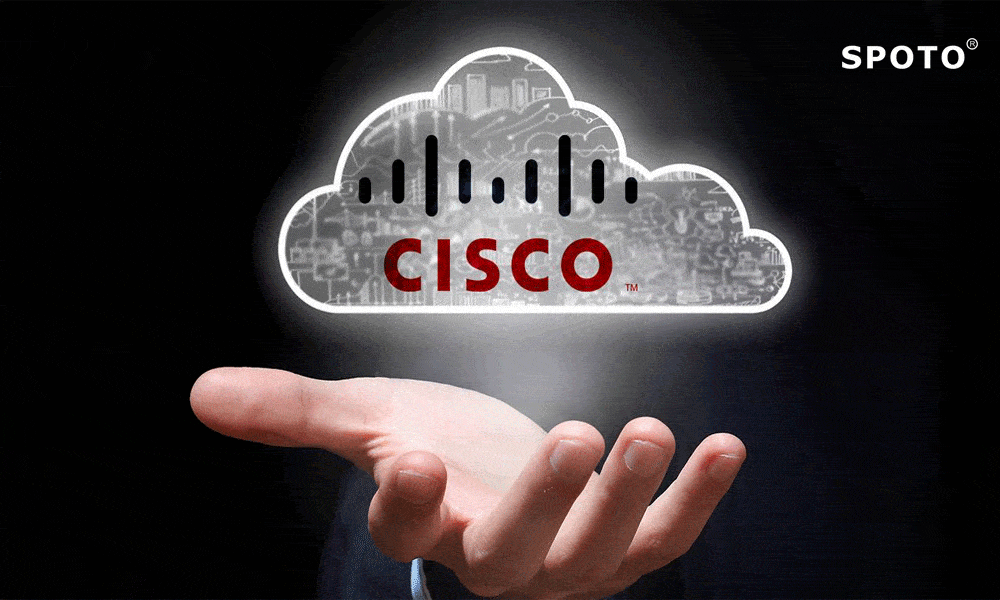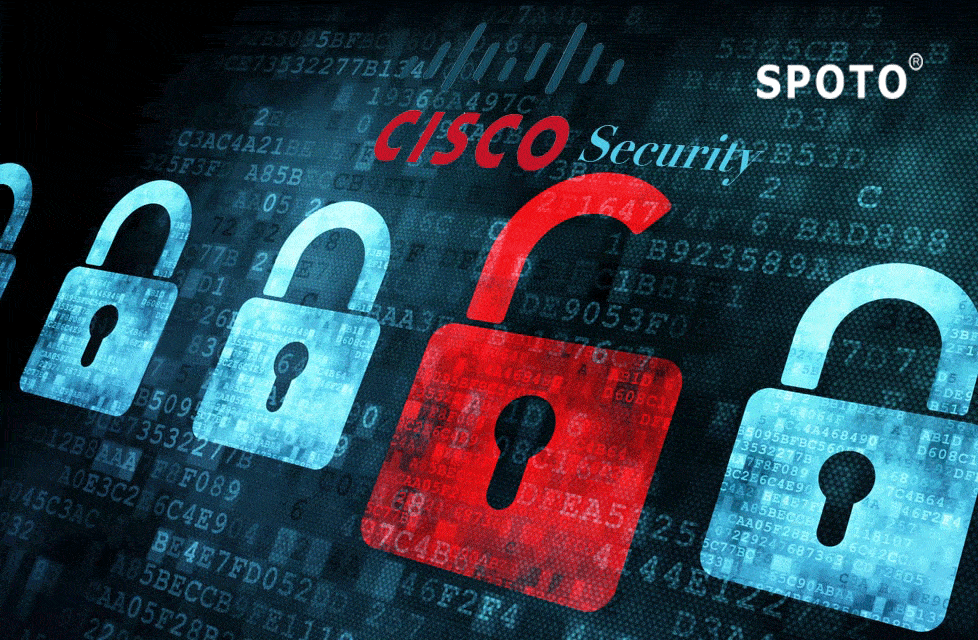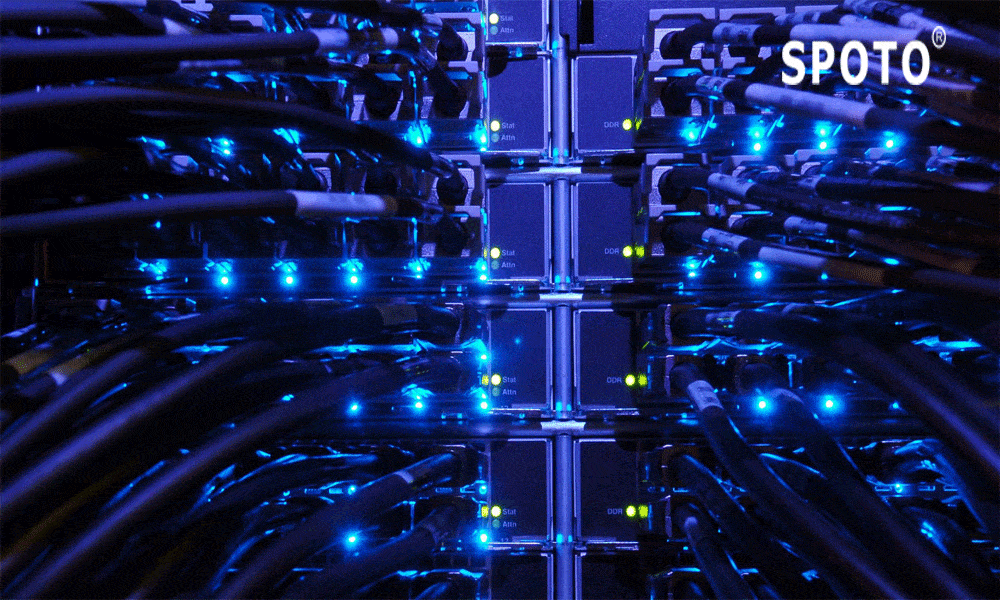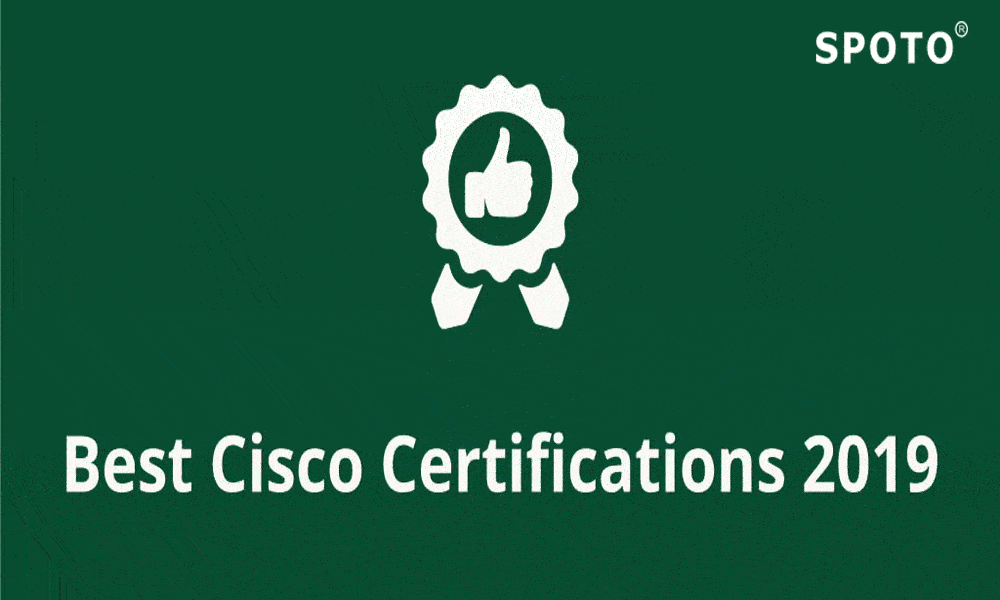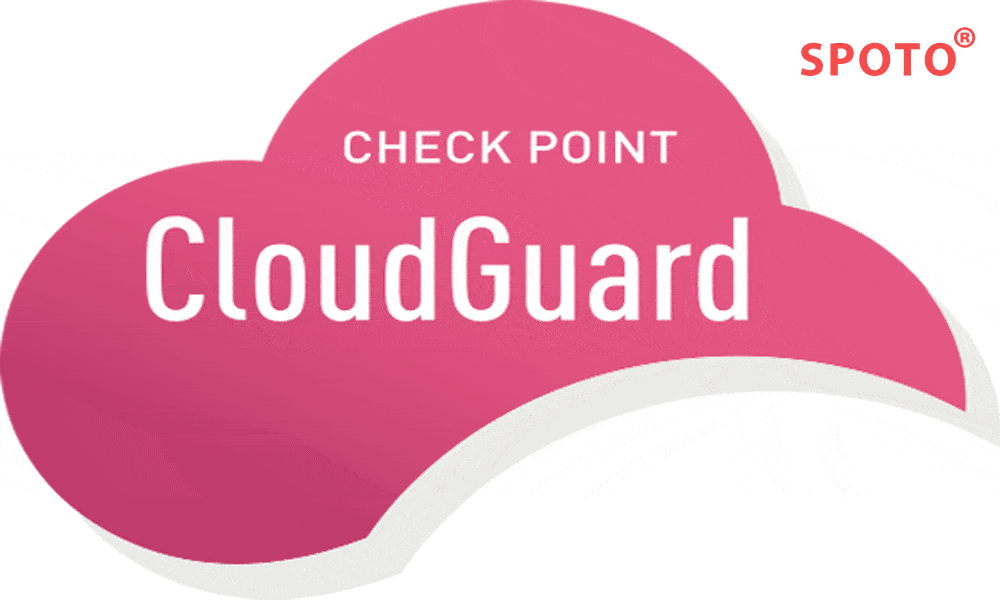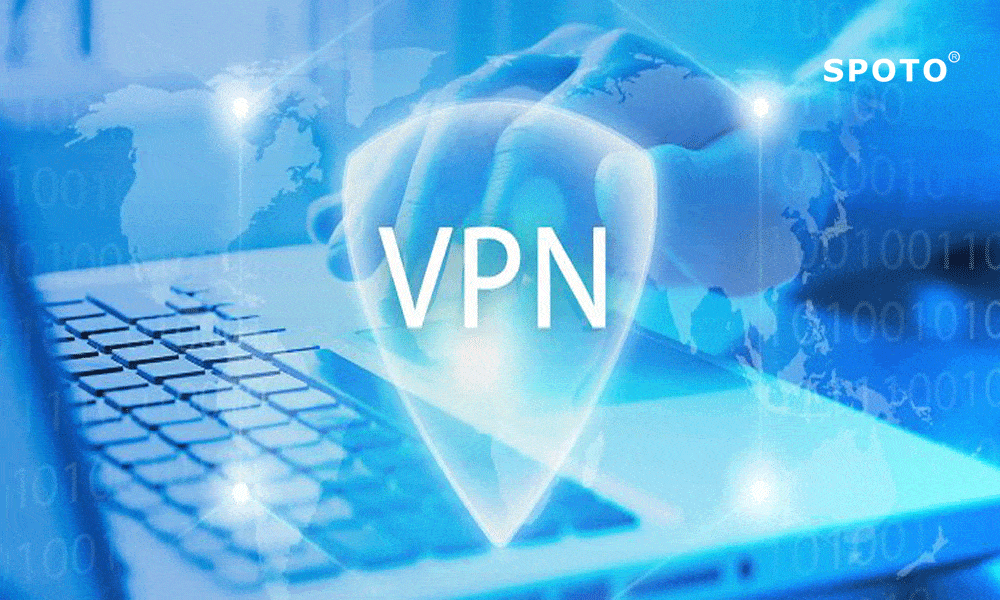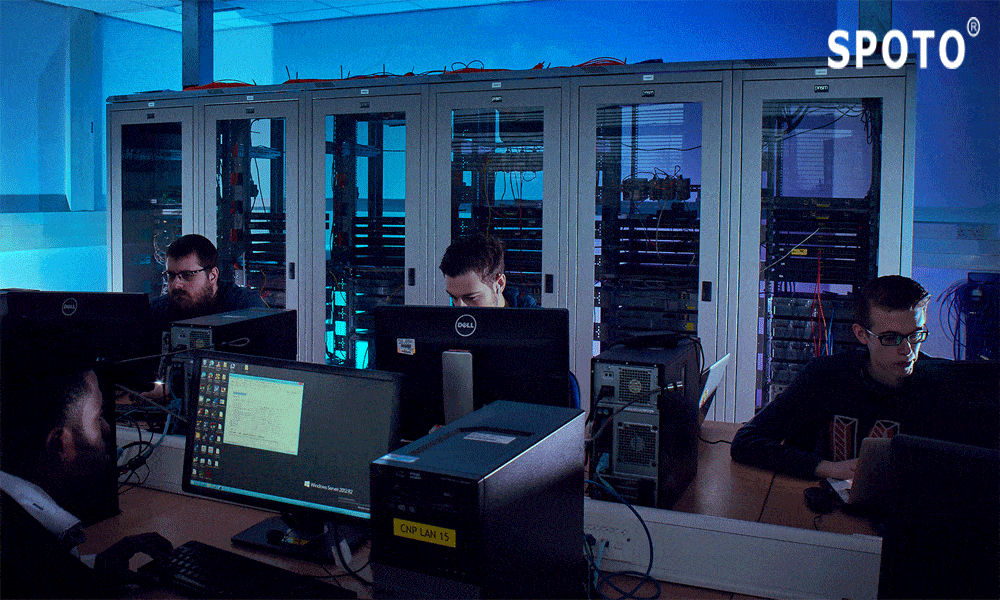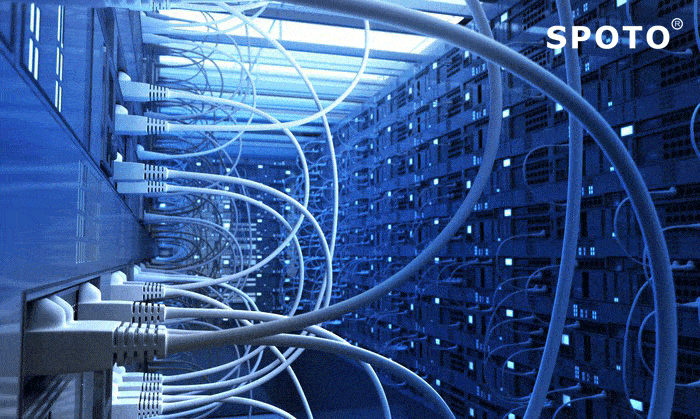-
- Cisco
- 1703
- 2024-01-18
Both the entry level certifications have their own importance in the field of IT Industry, and also it is quite difficult to gain both of them, unless you have a good training institute, like the SPOTO. Let’s compare both of this certification to understand its importance much better.
Categories
Exam Code
100% Pass Dumps
CCNP Enterprise
350-401 ENCOR
300-410 ENARSI
300-415 ENSDWI
300-420 ENSLD
300-425 ENWLSD
300-430 ENWLSI
300-435 ENAUTO
I. Cisco Certified Networking Professional Data Center
CCNA Certification: The CCNP Data Center certification would be exclusively focused on roles that would be particularly deal with data center designing, installing, and maintaining. The CCNP Data Center certification is also considered to be an advanced-level certification that would carry the CCNA Data Center certification as a prerequisite. In addition to of holding the CCNA Data Center certification, it is also recommended that learners should have about 2 to 4 years of data center experience, along with having trained for CCNA Routing and Switching, ideally would having to be earned the certification before beginning with CCNP Data Center.
The CCNP Data Center certification is presently undergoing some revisions with v5.0 CCNA Cisco certified network exams which would be retiring on July 23, 2017. CCNP Data Center v5.0 certification is going to require successful completion of four exams, but learners could choose from the two pathways so as to reflect specializations for the final two exams.
All learners are required to clear the below mentioned two examinations:
• Cisco CCNP Data Center 642-999 DCUCI
• Cisco CCNP Data Center 642-997 DCUFI
II. Career Considerations After CCNP Data Center
Payscale provides a helpful salary guide in order to help the learners for determining appropriate pay scales for job roles opportunities which would be associated with certification. Payscale would report, a range of salaries for the employees which would hold any CCNP certification, between $46,041 and $152,930.
Roles those are common for those who are holding the CCNP Data Center certification which includes systems administrator, network administrator, network operations analyst, network technician, data center analyst, data center designer, data center administrator, data center helpdesk engineer, and much more.
III. The CCNP – Routing and Switching
The stands for Cisco Certified Network Professional – Routing and Switching is considered as an intermediate-level certification that would be validating the learners’ expertise and experience in networking with Cisco products. The CCNP R&S is extraordinarily popular certifications among the learners and highly sought after by the IT industry. This certification level would be providing a lasting foundation for both virtual and physical networks in environments of the enterprise.
The CCNP R&S Exam is made up of three exams, they are mentioned below:
• 300-101 ROUTE
• 300-115 SWITCH
• 300-135 TSHOOT
IV. Career Considerations
Payscale provides a helpful salary guide in order to help the learners in order to determine appropriate pay scales for job opportunities which would be associated with the CCNP R&S. It would be depending on professional level experience, an employee who would be holding any CCNP Cisco certified network professional certifications offer that could be earned between $46,564 and $153,571 annually. Roles those are common for the candidates holding a CCNP R&S include senior network support engineer, network engineer, network administrator, IT manager, and network architect.
V. Conclusion
Nearly all the organizations which would be dependent on effective data center management. So in order to develop the data center knowledge and skills would be equipped the candidates to advance their career now and in the future as the industry that would continue to evolve. Taking into consideration your career to the next level which would be certified and specialization that would be creating exciting opportunities!
The CCNP R&S is a highly desirable certification that would be setting IT professionals apart as they place their foot into the IT Sector in order to enter into more advanced stages of their careers. Gaining the CCNP R&S opens doors and creates opportunities for learners in order to continue advancing their careers and take on exciting new professional certification challenges. If you wish to clear any of Cisco Certification, you should gain it by joining the SPOTO training institute.
-
- Cisco
- 776
- 2024-01-17
The Cisco Certified Network Professional Security certification would be continued to be a top certification for IT security professionals. As CCIE security certification would be disturbed prolong to dominate the industry, employers are looking for security professionals who would have earned the experience and credentials to develop and maintain for securing networks.
CCNP Security:
The CCNP Security certification is considered exclusively designed to support with the role and responsibilities for security in routers, switches, networking devices as well as appliances, and deploying, choosing, supporting and troubleshooting firewalls, VPNs and IDS/IPS elucidation for the networking environments.
The CCNP Security certification is made up of four exams, which are covered by training:
Cisco CCNP Security 300-208 SISAS
Cisco CCNP Security 300-206 SENSS
Cisco CCNP Security 300-209 SIMOS
Cisco CCNP Security 300-207 SITCS OR 300-210 SITCS v1.5
Exam Details:
Because the CCNP Security Certification is made up of four exams, please review each exam detail section carefully in order to fully understand the requirements of each exam experience.Get more about ccnp exam price 2019 click here.
300-208 SISAS
Exam cost: $250 (USD)*
Exam registration: Pearson VUE
Exam topics: SISAS Implementing Cisco Secure Access Solutions 300-208
Number of questions: 65-75
Passing score: Cisco does not circulate the passing score for its exams
Question types: Multiple choice with single answer; Multiple choice with multiple answer; Drag and drop; Fill-in-the-blank; Simulation; Testlet; Simlet; Implementing Secure Solutions
Time allotted for exam: 90 minutes (1.5 hours)
300-206 SENSS
Exam cost: $250 (USD)*
Exam registration: Pearson VUE
Exam topics: SENSS Implementing Cisco Secure Access Solutions: 300-206
Number of questions: 65-75
Passing score: Cisco does not circulate the passing score for its exams
Question types: Multiple choice with single answer; Multiple choice with multiple answer; Drag and drop; Fill-in-the-blank; Simulation; Testlet; Simlet
Time allotted for exam: 90 minutes (1.5 hours)
300-209 SIMOS
Exam cost: $250 (USD)*
Exam registration: Pearson VUE
Exam topics: SIMOS Implementing Cisco Secure Access Solutions: 300-209
Number of questions: 65-75
Passing score: Cisco does not circulate the passing score for its exams
Question types: Multiple choice with single answer; Multiple choice with multiple answer; Drag and drop; Fill-in-the-blank; Simulation; Testlet; Simlet
Time allotted for exam: 90 minutes (1.5 hours)
300-207 SITCS OR 300-210 SITCS v1.5
Exam cost: $250 (USD)*
Exam registration: Pearson VUE
Exam topics: SITCS Implementing Cisco Secure Access Solutions: 300-207 OR SITCS Implementing Cisco Secure Access Solutions: 300-210 v1.5
Number of questions: 65-75
Passing score: Cisco does not circulate the passing score for its exams
Question types: Multiple choice with single answer; Multiple choice with multiple answer; Drag and drop; Fill-in-the-blank; Simulation; Testlet; Simlet
Time allotted for exam: 90 minutes (1.5 hours)
Career Considerations:
CCNP Security infrastructure would provide you a quite helpful salary to help learners determine appropriate pay scales for the job opportunities associated with it. Depending on professional level experience, according to reports a range of salaries for employees holding any CCNP security certification program is placed in between $46,364 and $153,434. Roles those who are common for those holding a CCNP Security certification which would be included special agent, network engineer, senior network engineer, Cisco identity services engine, senior network architect, network security architect, IT manager, Network security engineer, and more.
Concluding Thoughts:�
CCNP Security Certification continues to be a hot topic in IT Certification. Learners who are equipping themselves with a CCNP Security certification proves often the creation new as well as exciting professional opportunities. Launch your Security Career in order to accomplish new heights with the CCNP Security. If you wish to have this certification, you could have it by joining the CCNP Security Training that would be provided by the SPOTO. SPOTO provides you the best study dumps which they provide them along with the passing guarantee. Pass two exams a core exam and a security concentration exam of your choice and earn CCNP security at SPOTO. Passing the core exam with good understanding and SPOTO Cisco Security solutions.
-
- Cisco
- 591
- 2024-01-16
As an IT professional dealing with enterprise networking, you may encounter situations where the number of BGP (Border Gateway Protocol) neighbor routing entries exceeds the limit set by your service provider. This issue can arise unexpectedly and cause disruptions in your network connectivity, particularly when relying on MPLS (Multiprotocol Label Switching) lines from telecommunications companies.
In this article, we'll explore a real-world scenario where a company faced a problem with their BGP neighbor routing entries exceeding the limit, and how they approached the resolution.
The Scenario:
The company had two lines, one of which was a telecom MPLS line. They needed to pass the route to the telecom's BGP route, allowing the telecom's BGP routing protocol to be transmitted to the corresponding routing table at the company's headquarters.
The Problem:
Suddenly, the telecom MPLS line experienced a failure, prompting an alert from the network monitoring system (NETCARE). Initially, it was suspected that the fiber optic cable was broken, and the network team arranged for troubleshooting. However, the issue turned out to be related to the number of routing entries published, which exceeded the limit of 20 set by the telecom provider.
Troubleshooting Steps:
1. The network team connected to the company's core switch to check the routing releases using the "show ip route eigrp 1" command, but no abnormalities were detected.
2. They then examined the establishment of the EIGRP1 neighbor directly connected to the telecom using the "show ip eigrp nei" command, which revealed that the neighbor was down due to a holding time expiration.
3. Attempting to re-establish the neighbor using the "clear ip eigrp nei" command did not resolve the issue.
4. Further investigation revealed that the port connecting the telecom's device and the company's core device had become half-duplex, causing the line to break intermittently.
The Solution:
The telecom provider's team logged into their equipment and found that the port configuration had changed to half-duplex mode. By reconfiguring the interface speed and duplex settings using the "interface speed 100 duplex full" command, they were able to resolve the issue.
Lessons Learned:
This incident highlighted the importance of effective communication and coordination between service providers and customers. In this case, the telecom provider made changes to their configuration without notifying the customer, leading to unexpected behavior and network disruptions.
To prevent similar issues in the future, it is crucial to establish clear communication channels and change management processes with service providers. Regular monitoring and proactive troubleshooting can also help identify potential problems before they escalate.
By understanding the root cause and implementing the necessary configuration changes, the company was able to resolve the issue of BGP neighbor routing entries exceeding the limit and restore their network connectivity.
-
- Cisco
- 350
- 2024-01-16
This is to be discussed in several ways. First: There are big problems in the current academic education in market. I am an external teacher in many schools. I am also a CCIE. At present, the status quo of college students is a little bit of learning, but they are not proficient. When I graduated, I didn’t have a skill in getting a hand. I can only admit that college students have higher overall quality and faster acceptance. Of course, good students still have it, and there is no discussion here. Then this situation has caused many graduates to be trained.
Second: In foreign countries, it is the first time to engage in network work for a period of time, and then to research. In China, on the contrary, many students need this card to enhance their competitiveness. It is a stepping stone, an interview opportunity. A little bit of the cart before the horse.
Third: There are test banks in various certification exams in China. Do you really learn the corresponding level or pass the back-to-back question bank? This is very different. Because you have to go through a technical interview, and later in the work is also a big wave of sand, only you have the ability to seize the opportunity when the opportunity comes.
1.CCNA
CCNA is a Cisco entry certification exam. If you want to obtain a CCNA certificate, you can use two methods. The first is to directly test the CCNA certificate, and the second is to pass the CND1 and CND2 respectively, and then exchange the CCNA certificate.
2.CCNP
CCNP as a Cisco intermediate certification exam, if you want to exchange CCNP certificate, you must pass CCNA certification, in order to test three CCNP certificates, a total of four exams are required to get the CCNP certificate.
3.CCIE
As the ultimate certification exam of Cisco, CCIE certificate is the authoritative certification in the industry. CCIE certificate can be directly obtained without CCNA/CCNP. To obtain the CCIE certificate, you must first pass the CCIE written test to qualify for CCIE LAB. After passing the CCIE LAB exam, you can obtain the CCIE certificate.
It is very difficult to obtain a CCIE certificate. It usually takes several years of experience as a network engineer in foreign countries, plus at least 1000 hours of real machine operation experience. In this case, an average of 3-5 LABs can pass. In the domestic CCIE mainly through training institutions, SPOTO's club learning has greatly reduced the difficulty of CCIE, 100% pass rate. Get more about how to check cisco certification number click here.
In general, when you graduate, you really have a good IE theory, then you have a great advantage in finding a job, the starting point is relatively high, about 50% higher than the salary of the recent graduates. It is very important that after a period of time, your development will be much higher than that of ordinary college students, and the gap will widen. There are not many students who can have such an idea at present. If you have a goal, and time, energy, and money are allowed, please stick to it. Finally, luck is also a part of strength, good luck!
-
- Cisco
- 1439
- 2024-01-16
Overview
There are many changes in Cisco CCIE Certification exam. Some old exam has retired such as CCIE Routing and Switching, and of course there are some new versions of exams. Today, we are going to talk about CCIE Security Lab Exam.
Before we learn about booking the CCIE Security Lab Exam, let’s have a brief overview of the CCIE Security Exam. The Cisco CCIE Security Lab Exam version 5.0 is considered to be an eight-hour, the hands-on exam that would be required a candidate so as to plan, design, implement, operate, and troubleshoot various complex security scenarios for a given specification. Knowledge of troubleshooting would be considered to be an important skill and candidates are expected to be able to diagnose and solve issues as part of their CCIE lab exam.
Get more ccie exam registration ccie lab exam time click here
Lab Format
The eight-hour lab format of CCIE Security consists of three modules and need to be taken in the below-mentioned sequence during the day of the exam: Clearing this gruesome exam would need the candidate to go through intense hands-on practice. If you are looking for such platforms, the SPOTO would be the best one for it.
Module 1: Troubleshooting
This module delivers incidents that are independent of each other, which means that the resolution of one incident wouldn’t be dependent on the resolution of another. The topology that would be used in the Troubleshooting module is different than the topologies which were used in the Configuration module.
Module 2: Diagnostic
The new Diagnostic module focuses on the skills which are required to properly diagnose the network issues, without having access to the device. Candidates will be provided with a set of documentation that would be representing a snapshot of a realistic situation: at a point in time in an investigation process that a network engineer might have to face. The main objective of the Diagnostic module is to assess the skills which are required to properly diagnose network issues.
Module 3: Configuration
The Configuration module would provide a setup which would be very close to an actual production network which would have various security components providing various layers of security at particular points in the network. Though the major part of the module would be based on virtual instances of the Cisco security appliances, the candidate might also be asked to work with physical devices as well. At the beginning of the module, the candidate would have full visibility of the entire module. A candidate could choose to work in the sequence in which the items are presented or he or she could resolve items in whatever order it seems preferable and logical to them.
Lab and CCIE Security Book
Booking the CCIE Security Lab Exam, a crucial milestone in obtaining your Cisco Certified Network Professional (CCIE) Security certification, involves several key steps:
1. Meet Prerequisites: Ensure you meet the prerequisites for the CCIE Security certification, which typically include passing the CCIE Security written exam.
2. Scheduling: Visit the official Cisco website to schedule your exam. Choose a date and location that aligns with your preparation timeline and preferences.
3. Study Resources: Utilize resources such as Cisco Press books, especially dedicated CCIE Security books, to bolster your knowledge of the exam topics. These materials provide in-depth insights into the content you'll encounter. Engage in extensive hands-on practice labs to solidify your skills. Practical experience is invaluable when preparing
4. Structured Study Plan: Develop a structured study plan that encompasses reviewing CCIE Security books, extensive lab practice, and taking mock exams. This plan ensures comprehensive preparation.
5. Pre-Exam Review: In the days leading up to the exam, intensify your preparations. Review your study materials, practice labs, and ensure you're familiar with the exam format and expectations.
6. Exam Day: On the day of the exam, arrive early, well-prepared, and with the confidence that comes from dedicated study and practice.
By following these steps and leveraging resources like CCIE Security books and practice labs, you can successfully book, prepare for, and pass the CCIE Security Lab Exam, earning your prestigious CCIE Security certification.
For the booking purpose, the candidates will need the following things:
A Valid Cisco user account
An identification number that was used by them to register for their written exam. In case you are giving exam in the U.S. and Canada, the ID number is basically your Social Security or Social Insurance number. In other regions, the testing vendor personally assigns the number.
Date on which they have passed the written exam
Achieving Passing score on the written exam
Once you have grabbed all the kinds of stuff and gone through proper recommended training, i.e. Training with SPOTO, you would be able to give the lab examination and later would be able to gain the CCIE Security Credentials. But remember it is not that easy, so pay attention properly while attending the courses offered by the SPOTO.
Get more ccie security 5.0 click there.
Read more:
What is CCIE Lab, and which would be the best website to prepare for it?
How should I study for the CCIE lab exam?
Exciting News-Pass CCIE EI Lab Exam with SPOTO’s New Rack Rental Service
How much does the CCIE lab exam cost?
Unmissable News–Best Parts of 4th Cisco Webinar on CCIE Security Lab Exam
What should I do for Next Level Cisco CCIE Certifications?
-
- Cisco
- 685
- 2024-01-18
The Advantages of Multicast
Any form of network communication involving the transmission of information to multiple recipients can benefit from the bandwidth efficiency of multicast technology. Examples of applications involving one-to-many or many-to-many communications include video and audio broadcasting, videoconferencing / collaboration, stock quotation and news feed dissemination, database replication, software download and website cache.
To understand the efficiency of multicast, consider providing a single-channel video server, as shown in Figure 1. For full dynamic full-screen viewing, the video stream requires a server of about 1.5 Mbps to the client bandwidth. In a unicast environment, the server must send a separate video stream to the network for each client (this consumes a link bandwidth of 1.5 x n Mbps, where n = the number of client viewers). With the 10 Mbps Ethernet interface on the server, only six to seven servers to the client stream can fully meet the network interface requirements. Even with a highly intelligent Gigabit Ethernet interface on a high-performance server, the actual limit will be 250 to 300 video streams of 1.5 Mbps. Therefore, the server interface capacity may be an important bottleneck, limiting the number of unicast video streams per video server. The unicast transmission of replication consumes a large amount of bandwidth in the network, which is another important limitation. If the path between the server and the client traverses the h3 router hop and the h2 switch hop, the "multi-unicast" video consumes a router bandwidth of 1.5 x n x h3 Mbps, plus a switch bandwidth of 1.5 x n x h2 Mbps. As shown in Figure 1,100 clients are separated from the server by two router hops and two switch hops, and a single multi-unicast channel will consume 300 Mbps of the router bandwidth and 300 Mbps of the switch bandwidth. Multi-unicast will consume 20 Mbps of the router and switch bandwidth even if the video stream bandwidth is reduced to 100 Kbps (acceptable quality is provided in the smaller window on the screen).
In a multicast environment, the video server needs to transmit a single video stream for each multicast group, regardless of the number of clients to view it. The video stream is then replicated in accordance with the networkundefineds multicast router and the switchundefineds requirements to allow any number of clients to subscribe to the multicast address and to receive the broadcast. In a router network, replication occurs only on the branch of the distribution tree, so substantially all of the replication occurs at the last switch. In a multicast scenario, only 1.5 Mbps of the server is used to network bandwidth, and the remainder can be used for additional channels of other uses or video content. In the network, the multicast transmission provides similar efficiency, consuming only 1/ n of the bandwidth of the multi-unicast solution.
Obviously, in the case of a large number of recipients of replication transmission, even in a simple network with a small number of router and switch jumps, there are great differences in server load and network load. Additional functions of multicasting are useful in specific applications such as financial services. Multicast transmission is delivered to almost all members of the recipient group at the same time. The variability of delivery time is limited by the difference of end-to-end network delay in the range of server-to-client path. In unicast scheme, the server sorts by transmitting multiple copies of data, so the delivery time is very variable, especially for large transmission or large distribution list. Another unique feature of multicast is that the server does not know the unicast network address of any particular receiver transmitted-all recipients share the same multicast network address, so they can join the multicast group while keeping it anonymous.
Primer on Multicast Technology
Multicast transmission technology can be used in data link layer (layer 2) and network layer (layer 3). For example, Ethernet, optical fiber distributed data interface (FDDI) and SMDS all support unicast, multicast and broadcast MAC layer addresses. As a result, a single computer on these networks can listen to unicast addresses, multiple multicast addresses, and broadcast addresses at the same time. Token rings also support the concept of multicast, but use different techniques to handle receiver groups.
If the scope of the multicast application is limited to a single physical or logical lan, it is sufficient to multicast over the data link layer. However, most multi-point applications will be of concern only if you can extend to a distributed campus or even a wide-area environment that includes many different network technologies such as Ethernet, FDDI, Token Ring, Frame Relay, and ATM. For these extended environments, multicast must also be implemented at Layer 3. The multicast transmission of Layer 3 involves the following special mechanisms:Addressing-must have a layer 3 address to communicate with a set of receivers rather than a single receiver. In addition, there must be a way to map the address to the layer 2 multicast address of the underlying physical network. For IP networks, Class D addresses have been set aside for multicast addressing. Class D address is composed of 1110, which is the higher order bit in the first eight-bit byte, followed by the unstructured 28-bit group address. In order to map the IP multicast address to the Ethernet address, the low 23 bits of the Class D address are mapped to the Ethernet address block that has been reserved for the multicast. Using this mapping scheme, each Ethernet multicast address corresponds to 32 IP multicast addresses. This means that hosts that receive multicasting may need to filter out unwanted multicasting packets that are forwarded to other groups with the same MAC layer multicast address. The Ethernet multicast address has "01" in the first byte of the destination address to allow the network interface to easily distinguish between multicast and unicast packets.
Dynamic registration-there must be a mechanism to notify the network computer that it is a member of a particular group. Without this information, the network will be forced to flood instead of multicasting the transmission of each group. For IP networks, Internet group multicast protocol (IGMP) is a IP Datagram protocol between routers and hosts, which allows dynamic maintenance of group membership lists. The host sends a IGMP report or joins to the router to join the group. Routers regularly send queries to see which hosts are still part of the group. If the host wants to continue his group membership, it will use the report to respond to the query. If the host does not send a report, the router prunes the list of groups to minimize unnecessary traffic. With IGMP V 2, the host can send a "leave" message to inform the router that it is no longer involved in the multicast group. This allows the router to trim the list of groups before scheduling the next query, thereby minimizing the amount of time wasted transmission is forwarded to the network.
Multicast forwarding-most IP multicast applications are based on UDP, which uses "best-effort delivery" and lacks TCP congestion avoidance window mechanisms. As a result, multicast packets may be discarded more frequently than unicast TCP packets. Because it is impractical for real-time application request retransmission, audio and video broadcasting may be degraded due to packet loss. Before deploying quality of service (QoS), the best way to minimize the loss of packets in frame-based networks is to provide sufficient bandwidth, especially at the edge of the network. When the reservation protocol (RSVP), real-time transport protocol (RTP) and 802.1p or other layer 2 priority mechanisms can provide end-to-end QoS on layer 2, the reliability of multicast transmission / layer 3 network can be improved.
Multicast routing-the network must be able to build a packet distribution tree that specifies the unique forwarding path between the source subnet and each subnet that contains members of the multicast group. The main goal of the distribution tree construction is to ensure that a copy of each packet is forwarded at most on each branch of the tree. This is achieved by building a spanning tree with the designated multicast router as the root of the sending host, thus providing the connection to the specified multicast router for each receiving host. For IP multicast, IETF provides several multicast routing protocols for consideration. These include: (MOSPF), protocol independent (MOSPF), protocol for distance vector multicast routing protocol (DVMRP), OSPF and core-based tree (CBT). The multicast routing protocol constructs the distribution tree by checking the routing table of the unicast reachability protocol. Some protocols use unicast forwarding tables, including PIM and CBT. Or, other protocols use their own private unicast reachability routing tables. DVMRP uses its own distance vector routing protocol to determine how to build a source-based distribution tree. Similarly, MOSPF uses its own link-state database to build a source-based distribution tree.
There are two types of multicast routing protocols: dense mode (DM) and sparse mode (SM). The DM protocol assumes that almost all routers in the network need to allocate multicast traffic to each multicast group (for example, almost all hosts on the network belong to each multicast group). Therefore, the DM protocol builds the distribution tree by initially flooding the entire network and pruning a small number of paths without a receiver. The SM protocol assumes that relatively few routers in the network will participate in each multicast. Hosts belonging to this group are widely dispersed, as most multicasting on the Internet may be the case. Therefore, the SM protocol starts with an empty distribution tree and adds branches only as an explicit request to join the distribution. DM protocol, MOSPF,DVMRP and PIM-DM are most suitable for LAN environment with dense cluster receiver and bandwidth to tolerate flooding, while SM protocol (CBT and PIM-SM) is usually more suitable for WAN environment. PIM can also work in sparse dense mode by adjusting its behavior to match the characteristics of each receiver group.
If you are interested in the IP Multicast technology, and you can contact SPOTO: https://cciedump.spoto.net/ where there are the latest news about Cisco being updated.
-
- Cisco
- 688
- 2024-01-17
CCIE Security Lab Exam Description:
The Cisco CCIE Security Lab Exam is an eight-hour, hands-on exam, for which the candidates are going to require to plan, implement, design, operate, as well as troubleshoot complex security scenarios for a particular specification which were given to them. Knowledge of troubleshooting here would be considered as an important skill and candidates would be expected to diagnose as well as provide solution of certain issues as part of the CCIE Security lab exam. Though to clear the CCIE Security Lab Exam, isn’t going to be an easy task, but if you gain the premium materials provided by the SPOTO, they could really help you out in your preparation for the exam.
Lab Format
The eight-hour lab format consists of three modules and needs to be taken in the following sequence during the day of the exam:
Module 1: Troubleshooting module:
The Troubleshooting module is 2 hours. If desired, candidates can extend the Troubleshooting module’s time by borrowing up to 30 min from the Configuration module. Note, the total Configuration's module time will be reduced by the extra time spend in the Troubleshooting module (if any, up to 30 min). If the exam takers would be able to finish the Troubleshooting module early, the unused Troubleshooting module’s time would be added to the Configuration module’s time, but they need to ensure that they don’t exceed a total lab exam time of 8 hours. The Diagnostic module is considered to be fixed in duration, which is 60 minutes.
Module 2: Diagnostic module:
The new Diagnostic module is going to focus on the skills which are going to be required to properly diagnose network issues, without having access to the device. Candidates would be provided with a set of documentation that would be representing a snapshot of a realistic situation: at a point in time in an investigation process that a network engineer might have to face. The main objective of the Diagnostic module is to assess the skills which are going to be required so as to diagnose properly network issues.
Module 3: Configuration module:
The Configuration module would be providing a setup very close to an authentic production network which would have various security components providing various layers of security at diverse points in the network. Though the major part of the module is going to be based on virtual instances of the Cisco security appliances, the candidate might be asked to work with physical devices as well. At the beginning of the module, the candidates are going to have full visibility of the entire module. A candidate would be able to choose to work in the sequence in which the items are going to be presented or you could resolve items in whatever order it seems preferable and logical to you.
Some Advantages of CCIE lab Exam:
High Salary:
The one who gets certified with CCIE certification could probably find a high-salary job. According to the Salary Comparison at PayScale, Salary Survey, Search Wages, an employee who is going to hold a CCIE Security certification can earn between $60,048 and $168,860 annually, which would depend on his/her experience. You would just have to spend a period of time to study hard, later on, you would be able to get a good job, with a high pay scale.
Promote to a higher office:
If you clear the CCIE, almost everyone would think you would have the superb ability in solving Network problems. It would provide proof about your ability and rich experience which you have on network solutions. Your boss would be able to trust you more and might push you into a good higher position.
So, if you wish to have all of these benefits, you could gain the CCIE Security Certification and for that, the best way would be to join the preparation courses offered by the SPOTO.
Get more spoto club reviews click there.
-
- Cisco
- 619
- 2024-01-16
IT networks or computer networks are exchanging data between devices. The network includes not only the design network but also the management, maintenance, operation and troubleshooting. The computer network allows devices to be connected to each other over a local area network (lan) or a larger network.
Experts recommend that IT network professionals use Cisco certification to absorb knowledge and skills in running networks. We know that Cisco is one of the best IT networking companies in the world and provides Cisco certification in all areas. These Cisco certifications verify that candidates can handle the network architecture.
If you are an aspiring network and plan to increase your network knowledge base by 2019, the best Cisco certification mentioned below can help you gain the right skills.
Here are some Best Cisco Certifications which candidates can take up to make a career in networking.
List of Best Cisco Certification in 2019:
CCNA Routing and Switching
CCIE Routing and Switching
CCNA Security
CCNP Security
CCIE Security
CCNA Data Center
CCIE Data Center
CCIE Collaboration
CCNA Cloud
CCNA Cyber Ops
CCNA Routing and Switching
Today, many companies are moving from traditional methods of setting up and managing networks to controller-based automation. As the skills required to operate these technologies continue to develop, candidates adopt a controller-based approach. In preparation, CCNA routing and switching is the only authentication that not only provides you with all the knowledge you need to manage the network, but also has the skills to operate and troubleshoot at the primary level. Beginners are advised to use CCNA routing and switching authentication. It is the most popular entry-level authentication in the field of the network.
CCIE Routing and Switching
CCIE Routing and Switching is a prestigious and prominent certification in the networking domain. Professionals who have design, plan, manage, operate and troubleshoot detailed network knowledge appear for The Cisco Certified Internetwork Expert (CCIE Routing and Switching). Though there are no pre-requisites to appear for the CCIE Routing and Switching, it is a recommendation for candidates to have 3 to 5 years of work experience before taking up the certification. You could work as Network Solution Architect, Network Solution Planner/Designer and a Senior Network with a salary package of $60,048 to $168,860 per annum. The CCIE Routing and Switching Architects and Engineers after a couple of year experience, the CCIE Certified Professionals can earn highest in the IT Networking Industry.
CCNA Security
All enterprises make use of Network Security as an essential part of the network. They protect the network against threats and vulnerabilities. The Cisco Certified Network Associate (CCNA Security) is an associate level certification which provides knowledge and skills to secure Cisco Networks. This certification helps the certified develop security network infrastructure, recognize threats and issues, and resolve them to protect the confidential data. The CCNA Security curriculum includes learning to install, monitor and troubleshoot network security infrastructure. Job roles like Network Security Specialist, Security Administrator, and Network Security Support Engineer are paid from $44,147 to $113,790 per annum
CCNP Security
Cisco Certified Network Professional Security(CCNP Security)is a high-level certification higher than CCNA security certification. CCNP security experts handle security and routers, switches, and network devices. CCNPSAcurity provides knowledge of choice, deployment, support and troubleshooting of firewalls, IDS/IPS solutions and VPN failures. The National Security Agency(NSA)and the National Security Systems Commission(CNSS)announced that the CCNP security certification was a CNSS training standard. The CCNP security candidate may be appointed as a cybersecurity engineer, whose annual income is about$84,000 to$118,000.
CCIE Security
Cisco Certified Internetwork Expert Security (CCIE Security) is the highest level in the security domain offered by Cisco. The CCIE Security leads you towards a career where you build an end to end security for a network infrastructure. The CCIE Security provides skills and knowledge to develop, manage, implement, and troubleshoot the network security architectures. The CCIE Security Professionals have in-depth knowledge and skills about every aspect of network security. There is no prerequisite stated to appear for the CCIE Security Certification but a job experience of 3 to 5 years could be useful or the candidate. The salary of a CCIE Security candidate could be around $100,000.
CCNA Data Center
A Data Center centralizes a company’s operations along with storing, managing and distributing data. A Data Center is home to the crucial component of the business. A Data Center is the core of any business. The CCNA Data Center could help you to learn to install, configure and maintain the Data Centers. A few areas where Data Center focuses is Data Center Network Concepts, Data Center Infrastructure, Unified Computing, Storage Networking, Data Center Automation, and Orchestration, etc. A CCNA Data Center Professional Certified is appointed as a Data Center Network Engineer or a Data Center System Engineer. The pay could be from $100,000 to $150,000.
CCIE Data Center
CCIE Data Center is the top level of expertise. The Cisco Certified Internetwork Data Center (CCIE Data Center) validates that the candidates possess the skills to plan, design, implement and troubleshoot the complex Data Center Infrastructures. The CCIE Data Center practitioners also have expertise in different technologies and industry practices. The CCIE Data Center plays the role of a leader as the candidate holds the knowledge and skills to manage the Data Center Network. A Senior Data Center Architect or Senior Data Center Engineer/Administrator is provided with a salary of around $123,500.
CCIE Collaboration
The CCIE Collaboration includes endpoints like Video, IP Phone, Mobile, Desktop, and Conferencing like video and web conferencing which enables people to connect. It also includes designing a work space. CCIE provides you with knowledge about Collaboration solutions interoperation and integration, configuration, managing and troubleshooting of complex architecture. The foundation of the CCIE Collaboration is overcoming the challenges of video and mobility. The CCIE Collaboration offers Job Roles like Collaboration Architects, Unified Communication Architects, and Voice or Video Network Manager. The salary of a CCIE Collaboration could be around $129,735.
CCNA Cloud
Many companies these days are diverging towards cloud technology. Cloud Technology is agile, and provides business outcomes. Cisco is the only company in the world which an end-to-end Cloud and Inter-Cloud Story. The CCNA Cloud Certification will provide you with entry-level knowledge and skills about Cisco Cloud Products and Services. The Job Designations assigned to these professionals could be Cloud Engineers, Network Engineers, and Cloud Engineers. These engineers and administrators possess a cloud skill set which enables them to manage the IT Networks. The pay for this job would be around $74,000 per annum.
CCNA Cyber Ops
Due to increased threats and vulnerabilities, organizations have to be cautious from cyber threats. Organizations need to manage cyber security incidents the protect loss of company data. Security Operation Centers (SOC) keep an eye on all the networks to protect organizations and fight against cyber security threats. The candidates are termed as associate level cyber security analysts. The pay of an Associate Level Cyber Security Analyst is around $67,000 per annum.
These Best Cisco Certifications will not only provide you with knowledge and skills to operate the network but also land you up in one of the best jobs in the industry. They will help you dominate your domain and will prove to be an edge over other candidates.
-
- Check Point
- 668
- 2024-01-17
In today's digital landscape, where cybersecurity threats are constantly evolving, obtaining Check Point certifications can be a game-changer for IT professionals. These industry-recognized certifications validate your expertise with the cutting-edge technology that secures the internet for Fortune and Global 100 companies.
Benefits of Check Point Certifications
Achieving Check Point certifications offers numerous advantages, including:
1. Mastering Check Point Products: Gain in-depth skills to support, configure, and sell Check Point's comprehensive security solutions.
2. Exclusive Access: Enjoy two years of expert access to Check Point's Secure Knowledge database and advanced product documentation.
3. Career Advancement: Stand out in the competitive IT job market by demonstrating your commitment to cybersecurity excellence.
To unlock these benefits, you'll need a Check Point User Center or Partner Map account, as well as a Pearson VUE account with the same email address as your User Center account.
Exploring Check Point Certification Paths
Check Point offers a range of certifications to cater to different skill levels and career paths. Here are some popular certification options:
1. Check Point Certified Security Administrator (CCSA) R80:
The CCSA R80 certification validates your ability to configure, install, and manage Check Point Security Gateway and Management Software Blade systems on the GAiA operating system. You'll gain expertise in areas such as:
- Installing R80 management and security gateways in distributed environments
- Configuring rules, objects, and settings to define security policies
- Managing multiple concurrent administrators and defining permission profiles
- Configuring Virtual Private Networks (VPNs) and working with Check Point clustering
- Defending against network threats and optimizing rule bases
- Monitoring suspicious network activities and analyzing attacks
2. Check Point Certified Security Expert (CCSE) R80:
The CCSE R80 certification builds upon the CCSA, enabling you to validate your skills in building, modifying, deploying, and troubleshooting Check Point Security Systems on the GAiA operating system. Prerequisites for the CCSE R80 include the CCSA R80 certification.
3. Check Point Managed Security Expert (CCMSE):
The CCMSE certification covers advanced topics such as global policy configuration and implementation, firewall virtualization and consolidation, and multi-domain security management. This certification requires you to be a Certified CCSE R70/R71 with at least one year of experience working with Check Point products.
Prepare for Success with SPOTO Training
To ensure your success in obtaining Check Point certifications, consider enrolling in comprehensive training courses offered by SPOTO. Their expert instructors and real-world scenarios will equip you with the knowledge and practical skills necessary to excel in the certification exams.
By investing in Check Point certifications, you'll not only validate your cybersecurity expertise but also gain a competitive edge in the ever-evolving IT industry. Unlock new career opportunities and stay ahead of the curve by pursuing these globally recognized certifications.
-
- Cisco
- 928
- 2024-01-18
Some ways to build CCIE SP Lab
Here, we would be discussing some ways to build a lab for CCIE SP Lab Exam. The first thing to do if you haven’t done it already would be to make sure that you have the support from your family before you would be starting to prepare for the CCIE SP lab. Explain to them the time that you would be needed to put in to prepare and also explain why you wish to do it and what the benefits you would be obtained by doing it.
Once you would have totally committed it would be time to grade yourself. Go through the blueprint for the track you would be preparing for at the Cisco Learning Network. You should grade yourself on each topic from 1 to 5 on where you believe that you are today. You need to make a realistic assessment; it is not likely that you would be 4 or 5 on many topics unless you would become a very experienced engineer. This would be considered as an expert level exam, it is considered vastly different from any associate or professional level exam.
You should also make a detailed schedule where you should write down each topic that you would be studying and how much time you would be expecting to put in on each topic. You should also map each topic to lab workbooks and if you need to do reading in books or blogs etc, check out the courses books being offered by the SPOTO. Most people studying for the CCIE SP will like to use a lab workbook that would be formulated by the SPOTO.
While preparing for the CCIE SP lab, it would be quite essential that you learn about how to verify your configuration. Don’t rely on your configuration to be correct unless you would have verified it, yourself. You are needed to learn all the show commands that you would need to verify for each protocol or feature. Many candidates would have gone to the lab and configured everything quite perfectly, or so they believed, only to get a detrimental score in their CCIE SP lab report. Everything is about verification. If you don’t have time to verify and configure in the CCIE SP lab, you aren’t at the expert level which would be required to clear the CCIE SP lab yet. Just keep practicing until you reach there!
It is considered to be very important to feel comfortable in the CCIE SP lab exam. The more you know about the lab the less stress you would feel about going to the CCIE SP lab exam. I would write down what I am going to remember from the CCIE SP lab here to give you a better picture of it. These are my thoughts and I won’t be able to provide you guarantee that they are accurate for CCIE SP lab or not, but if you gain the courses which would be provided by the SPOTO, they will provide you guarantee to achieve success in this exam in the very first attempt. Get more ccie lab switches click there.
Introduction to the benefits of CCIE SP Lab for SPOTO
SPOTO CCIE CLUB offers the candidates dumps in all Cisco track written as well as lab exams. Besides, they had already helped about more than 500 CCIE candidates to obtain the magical CCIE Certifications, since October 2015.
CCIE Service Provider v4.1 LAB Examination Content:
TS:1 set topology,TS1 (3 weeks before the exam)
2. DIAG:1 set (1 week before the exam)
3. CFG:1 set topology, LAB 1
So, if you wish to clear your exam in one go, acquire the prep courses offered by the SPOTO CLUB. SPOTO CLUB's prep courses also include the knowledge of Cisco ios, routers and switches, Cisco networks, CCNA routing switching, Cisco routers, etc.
-
- Cisco
- 678
- 2024-01-15
Virtual Private Network (VPN) technology has become an integral part of modern networking, enabling secure and encrypted communication over public networks such as the internet. VPNs establish secure tunnels between endpoints, ensuring data privacy and protection against potential threats. This article provides an in-depth overview of VPN technology, covering its fundamentals, key components, and practical applications.
Understanding VPN Basics
VPN connections create secure tunnels between endpoints through public networks like the internet. These tunnels encapsulate and encrypt data, ensuring confidentiality and integrity during transmission. VPN technology primarily relies on the Internet Protocol Security (IPsec) protocol suite and the Internet Key Exchange (IKE or ISAKMP) protocol for key management and authentication.
VPN Packet Flow and Operation
In a typical VPN setup, such as on Cisco Firepower Threat Defense devices, incoming traffic is first decrypted before being processed by the Snort engine for security inspection. Outgoing traffic is inspected by Snort and then encrypted before transmission through the VPN tunnel. Access control policies on the VPN endpoints determine which traffic is allowed to traverse the tunnel, ensuring comprehensive security.
VPN Components: IKE and IPsec
IKE (Internet Key Exchange) is a key management protocol responsible for authenticating VPN peers, negotiating encryption keys, and establishing IPsec Security Associations (SAs). IKE negotiations occur in two phases: Phase 1 establishes a secure channel between peers, and Phase 2 negotiates the IPsec SAs for data transmission.
IPsec (Internet Protocol Security) is the core protocol suite that provides data encryption and authentication services for VPN tunnels. IPsec proposals define the encryption algorithms, authentication methods, and other security parameters to be used for protecting data within the VPN tunnel.
Optimizing VPN Security and Performance
When configuring a VPN, it's essential to strike a balance between security and performance. Stronger encryption algorithms, such as AES-GCM, AES-CBC, and 3DES, offer enhanced data protection but may impact system performance. Hash algorithms like SHA-256, SHA-384, and SHA-512 provide robust message integrity, while Diffie-Hellman groups (e.g., Group 14, 19, 20, 21) determine the strength of the key exchange process.
By carefully selecting the appropriate IKE policies, IPsec proposals, and encryption algorithms, organizations can tailor their VPN implementations to meet their specific security requirements and performance needs.
VPN Licensing and Deployment Considerations
On Cisco Firepower Threat Defense devices, VPN functionality is available by default, but the use of strong encryption algorithms may require appropriate licensing and export control features enabled. Organizations should consult with their IT teams or security professionals to ensure compliance with relevant regulations and standards.
In conclusion, VPN technology plays a crucial role in securing communications over untrusted networks. By understanding the core components, protocols, and configuration options, organizations can effectively deploy and manage VPN solutions that meet their security and performance requirements, enabling secure remote access, site-to-site connectivity, and data protection across distributed networks.
-
- Cisco
- 705
- 2024-01-16
Herein, you would be through the equipment requirements and pre-lab tasks in preparation for taking the VPN practice lab.
The CCIE Routing and Switching Lab exam would be commenced with 2 hours of troubleshooting which would be again followed by 5 1/2 hours of configuration and ends with 30 minutes of additional questions. This CCIE Routing and Switching Lab have been timed to last for 8 hours of configuration and self-troubleshooting, so as to aim in order to complete the lab within this period. Get more ccie lab switches click there.
Then either score yourself at this point or you might continue until you feel that you have met all the objectives. Now, we are going to guide you through the equipment requirements and pre-lab tasks in preparation for taking this CCIE Routing and Switching practice lab.
If you don't own six routers as well as four switches, consider using the equipment which would be available and additional lab exercises as well as training facilities that could be found within the CCIE Routing and Switching. But before that, if you wish to practice this in detail, you could do it by gaining access to the prep courses of SPOTO.
Equipment List:
You would be needed the following hardware as well as software components in order to begin this practice lab:
• Six routers loaded with Cisco IOS Software Release 12.4 Advanced Enterprise image and the minimum interface configuration, as it is being documented in Table 3-1
Table 3-1. Hardware Required per Router
Router Model Ethernet I/F Serial I/F
R1 3825 1 1
R2 3725 — 2
R3 3825 — 2
R4 3825 1 1
R5 3825 1 1
R6 3825 2 —
The 3825s used in this lab were loaded with c3825-adventerprisek9-mz.124-6.T.bin, and the 3725 was loaded with c3725-adventerprisek9-mz.124-6.T.bin.
NOTE
The 3550 in this lab was loaded with c3550-ipservicesk9-mz.122-25.SEE.bin, and the 3560s with c3560-ipservicesk9-mz.122-25.SEE.bin.
• One 3550 switches with Cisco IOS Software Release 12.2 IP Services and three 3560 switches with Cisco IOS Software Release 12.2 IP Services.
Lab Topology
This practice lab uses the topology, which you must re-create with your own equipment.
Switch Instructions
Configure VLAN assignments from the configurations which would be supplied on the CD-ROM or from Table 3-2.
Table 3-2. VLAN Assignment
VLAN Switch1 Switch2 Switch3 Switch4
45 Fa0/4, Fa0/5, Fa0/6 — — —
200 Fa0/19 — — —
400 — Fa0/19 — —
Trunk Fa0/1 Fa0/6 — —
Trunk Fa0/20 Fa0/20 Fa0/20 Fa0/20
Frame Relay Instructions
Configuring one of the routers you would be going to use in the lab as a Frame Relay switch or would be having a dedicated router purely for this task. This CCIE Routing and Switching lab would be utilizing a dedicated router for the Frame Relay switch. A fully meshed environment is going to be configured between all the Frame Relay routers. Pay attention in the lab as to which PVC (permanent virtual circuits) is actually going to require. You are needed to keep the encapsulation and LMI (Local Management Interface) settings to default for this exercise, but experiment with the settings outside these labs because you might be required to configure the Frame Relay switching within your authentic lab.
If you are going to utilize your own equipment, keep the DCE (data circuit-terminating equipment) cables at the frame switch end for simplicity as well as provide a clock rate to all links from this end.
So, here you have basic knowledge, about what you would be needed in the CCIE Routing and Switching Practice Lab, but, knowing and doing is a totally different thing, thus, your next step would be to practice it on real or virtual equipment. I would say that if you wish to have such a practice, you could gain it on the SPOTO.
-
- CISSP
- 549
- 2024-01-15
Candidates, who are going to sit in an original proctored paper-and-pencil version of the (ISC)2 Certified Information Systems Security Professional otherwise known as CISSP exam might identify with the following nagging thoughts chewing at the minds of candidates as they would be attempted to center themselves for the long haul in what was most likely an unfamiliar environment:
For the latest version of CISSP, (ISC)2 has introduced technology which would be known as CAT (computerized adaptive testing). This technology would be attempting to make the CISSP test smarter by allowing the testing engine to gauge a candidate’s particular abilities and then tailor the exam which would be based on scoring on level of ability. That tailoring is going to be reevaluated with each question a test taker answers. This process would be supposed to enable the CISSP exam in order to provide a more precise evaluation of the candidate’s abilities. In addition, CAT would be enabling (ISC)2 to reduce the total number of questions a candidate must answer from 250 to a pool in the range from questions ranging from 100 to 150 questions. The total amount of time that would now be allotted for sitting the CISSP exam is about three hours instead of six. If you wish to have certain good prep courses for CISSP, you could have it by joining the SPOTO.
SPOTO 100% valid CISSP dump will help you clear the CISSP exam in the first try!
The CISSP CAT exam would be discovering your level of ability by launching your exam with a question that is below the passing standard. The rest of the exam is going to be tailored based on your answer to that question as well as your answer to each question that would be coming after it. If you’re exceptionally knowledgeable, you would be able to pass the CISSP CAT exam before you’ve reached the end of the pool of 150-question allotted. However, you would most likely be required to answer at least 100 of those 150 questions to complete the exam, even if you provide a correct answer for each and every question.
Even though the new CAT experience does make the live test experience a bit more comfortable for the candidate, preparation for the exam is considered another matter. Study guides, as well as practice exam engines, wouldn’t be able to approximate the CISSP exam’s proprietary CAT experience, nor could they predict the scoring algorithm your particular exam experience might utilize. In order to arm candidates with the most knowledge as well as confidence, there are lots of institute who offers you prep courses for CISSP, which would be designed to cover the domain objectives of the actual CISSP exam as well as provide a standard scoring system that requires a minimum of 700 points out of 1000 so as to clear.
Concluding:
The best way to prepare for the CISSP CAT exam would be considered the same way you would have prepared for the linear CISSP CBK exam, or for the paper-and-pencil exam. Study each and everything. Sit for the practice exams. Don’t assume that you have the knowledge or remember everything about your own area of expertise. Don’t assume that you know what path the actual exam would be taking you down based on how you would be answering the first few questions or the content of practice materials.
Get a good night’s sleep the night before you would be giving your exam. Have a good meal. Show up to the testing center early as well as with appropriate identification. Then you could feel more confident as you take the test. Thus, if you wish to have more knowledge about the CISSP Certification, you could have it through the training courses offered by the SPOTO.
-
- Cisco
- 785
- 2024-01-16
Well, to begin with, any certification would prove to be a signal of skill as well as dedication to an employer. The CCIE Wireless Certification would be bringing immeasurable bona-fides to your resume because it is considered as the pinnacle of your certification pathway. It would be compared to that to the PhD-level of certification; the CCIE Wireless comes up with lots of whack among peers and employers.
If we look out for the cost, it is quite an expensive exam, which would be costing more than $2,000 so as to take both the written as well as labs portion of the exam. Even though the cost is precipitous, the value of a CCIE Wireless certification in earning potential is far greater than the cost of achieving the CCIE Wireless. Considering the fact that there would be about 2,049 working hours in the year, suppose if you make $1 more per hour, then you would be able to cover the cost of the exam in one single year.
And you would be able to find lots and lots of opportunities.
In order to understand the value of the CCIE Wireless Track, it is necessary to understand the benefits of the same.
Benefits of CCIE Wireless Certification:
Cisco CCIE Wireless training in International is considered as part of the Cisco Certification training course class, The Cisco Certified Internetwork Expert Wireless (CCIE Wireless) certification would be able to assess and validate wireless expertise. The Exam Takers who clears, the CCIE Wireless certification exams are going to demonstrate broad theoretical knowledge of wireless networking as well as a solid understanding of wireless local area networking (WLAN) technologies from Cisco, which is considered as the market leader in WLAN technology.
One of the benefits of CCIE Wireless Certification is that it provides the candidate a greater opportunity for salary increase as well as job advancement, it also validates expertise in major aspects of wireless LAN technology, and also provides a stepping stone for individuals who would be interested in a career in working or managing with Cisco wireless technologies.
It would be certifying expert-level knowledge as well as skill for building an extensible Enterprise WLAN. It enables candidates to combine their core technical expertise with knowledge of accelerating technologies, such as cloud, web programmability, and the Internet of things.It helps to configure, diagnose, and troubleshoot a series of complex network scenarios. It enables to understand how the network and service components interoperate, and how the functional requirements translate into specific device configurations.
The knowledge of troubleshooting would be considered as quite an important skill and candidates would be expected to diagnose and solve issues. Cisco announces a flexible and alternative way of recertifying the expert-level certification for the holders. In addition to the existing option of clearing the relevant exams, candidates would be able to choose to recertify by earning credits through the Continuing Education Program.
Cisco’s Continuing Education Program is going to be based on three founding principles: Flexibility, Diversity, as well as Integrity. Flexibility could be achieved existing Cisco certified individuals would be offered an alternative option for recertifying, in addition to the already existing option of recertifying by clearing the relevant exam or exams. Diversity would be achieved by allowing individuals a wide range of preapproved items, like the online courses, instructor-led training, authoring of content, as well as Cisco Live training offerings, which could be pursued to earning credits toward recertification. Integrity could be achieved by having content providers who have been authorized by Cisco, who would be delivering the content to the individual seeking recertification, validating the credits submitted by that individual.
So, if you wish to have all these benefits, you have to gain this certification, which again isn’t going to be an easy task, unless you have help. I would suggest you check out the courses offered by the SPOTO. They are the best when it comes to various IT Certifications.
-
- Cisco
- 748
- 2024-01-18
The CCIE Routing and Switching (R&S) Lab Exam is an 8-hour, hands-on examination that tests a candidate's ability to configure and troubleshoot complex networks according to given specifications. In this CCIE R&S lab exam, troubleshooting skills are paramount, as candidates must diagnose and resolve various issues presented during the exam. Candidates are responsible for configuring not only end-user systems but also all devices within the network.
CCIE R&S Lab Exam Format
The 8-hour lab exam consists of three modules that must be completed in the following progression:
Module 1: Troubleshooting
The Troubleshooting module presents independent incidents that require resolution. The topology used in this module differs from the ones used in the Configuration module. This module lasts 2 hours, but candidates can borrow up to 30 minutes from the Configuration module if needed. Conversely, any unused time from the Troubleshooting module is added to the Configuration module's time, ensuring a total lab exam time of 8 hours.
Module 2: Diagnostic
The new Diagnostic module focuses on the skills required to properly diagnose network issues without direct access to devices. Candidates are provided with documentation representing a realistic scenario, simulating a network engineer's investigation process. The objective of this module is to assess the following skills:
- Analyzing
- Correlating: Discerning multiple sources of documentation, such as email threads, console outputs, logs, network topology diagrams, and traffic captures.
These activities are part of overall troubleshooting skills but are evaluated separately due to the different format of the items compared to the Troubleshooting module, where candidates troubleshoot and resolve issues on actual devices.
Module 3: Configuration
The Configuration module presents a setup similar to an actual production network with various security components providing multiple layers of security at different points. While primarily based on virtual instances of Cisco appliances, candidates may also work with physical devices. At the beginning of the module, candidates are given full visibility of the entire module and can choose to resolve items in the presented sequence or in a preferred logical order.
To gain more insights and prepare effectively for the CCIE R&S Lab Exam, consider joining a reputable training provider like SPOTO, which offers comprehensive CCIE training and resources.



